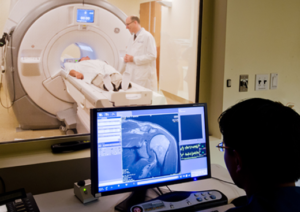Communication is the key to a successful business today. Much like any other domain, healthcare needs fast and effective communication. Without timely and effective communication, the lives of thousands of patients remain at stake. Diagnosis has always been a primary process for early disease detection and proper treatment. Any delay in diagnosis can be fatal for the patients.
Important of Communication In Radiology
When it comes to the medical care sector, even a minor delay in communication can be a matter of life and death. From timely detection of the diseases to the interpretation of the reports, the life of the patients and the treatment progress depend on these inter-departmental efficiencies. A recently published work in Academic Radiology has pointed out ad discussed the role of c communication in radiology in detail.
According to the reports, the department of radiology acts in collaboration and association with many other departments. Radiologists and radiology technologists contact the administrative staff, nurses, and clinicians to keep the workflow smooth and uninterrupted. While this inter-departmental communication is necessary, intra-departmental communication remains the cornerstone of the system. If the radiologists cannot communicate with each other in time, even the best inter-departmental communication may fail to come up with the best results.
The Challenge
Communication within a department is undoubtedly essential. However, various factors make smooth communication a challenge at times. The department of radiology may have people belonging to a wide range of ages. The generation gap factor often triggers problems like polarization, leading to inefficient communication within the department.
The age gap between technologists and radiologists often becomes the primary source of inefficient communications. The authors of the study, Omer A. Awan and Sharon Mohammed of Memorial Sloan Kettering Cancer Center, further claim that the rift has existed for a long time.

The Solution
Radiologists and technologists have always found it difficult to settle for a common choice for tools, tone and style. Here are some solutions for these problems that the authors have suggested.
1. The authors suggested paying heed to the order of the day for selecting the method of communications. Traditionalists might prefer a more formal way of communication. On the other hand, millennials will opt for smarter and faster communication at any time. Therefore, it is necessary that the two parties settle the mode of communication in the first place before commencing the process.
2. The team further suggested that rads and techies should work hand in hand. Radiologists carry years of experience with them and the technologists come with an in-depth understanding of the modern methods. If both can work in a collaborative environment, the outcomes will be superior. They should put in enough effort to bridge the gap so that the medical care sector gets to serve more people, more efficiently.
3. The authors also explained the importance of collaborative behavior in such an environment. According to them, if employees from different positions and designations can feel free to share their feedback and suggestions, learning opportunities will grow for everyone. If one can converse with a superior without any hesitation, an exchange of ideas will take place. Consequently, the department will get benefitted in the long run.
4. Last but not least, the authors advocated for the creation of a post of triage technologist. Technologists with years of experience possess a clearer understanding of the entire workflow. They also understand the clinical protocols, methods, requirements of diagnostic examination more transparently. Therefore, these technologists can work as the bridge between veteran rads and young techies.
At Sepstream®, we make sure that you get the best imaging solutions at any time. We use advanced equipment, powered with intuitive algorithms, that make diagnosis and imaging accurate and fast. Explore the array of our software solutions to make your medical services more productive and patient-friendly.